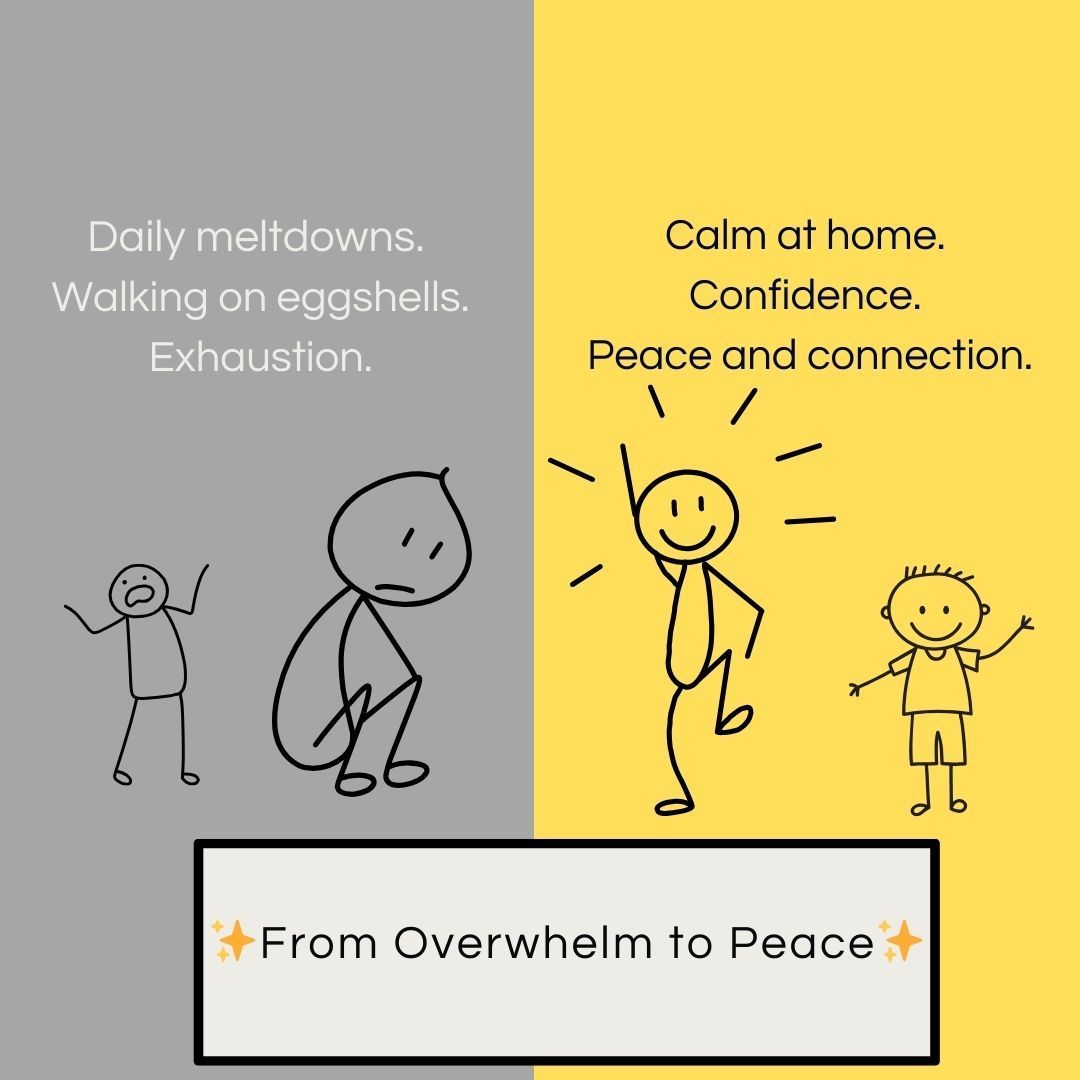Defiance (It’s NOT What You Think)

You make a minor request of your child, something small.
But, instead of cooperation, what do you get?
Attitude.
Arguments.
Defiance.
- Maybe your toddler falls on the floor, screaming when you ask her to put her shoes on.
- Or your preschooler screams, “NO!” when it’s time to clean up.
- Or your grade-schooler ignores you, or refuses to come to dinner, after playing video games.
- Or your teenager procrastinates, or rolls their eyes and gives you attitude, about doing chores or starting homework.
It looks like defiance, right?
It looks like a child intentionally being difficult.
It looks like a child who is spoiled, who won’t listen, or who HAS to get her way.
It looks like that. But that’s NOT it.
What is actually going on??
- Defiance is often simply a kid who is struggling with transitions.
It’s true.
Transitions are what we call when we go from one activity to the next.
Getting out of bed. Putting on clothes. Getting in the car. Brushing teeth. Starting homework.
These may sound minor, like things we do every day.
But to the brain, these count as transitions.
It turns out transitions are challenging for the brain.
This is true for adults AND children.
But for some kids, because of how their brain works, transitions are so hard, they become MAJOR POWER STRUGGLES.
Why are transitions so challenging?
Transitions are challenging because:
- They require extra brain power
- They can trigger the fear parts of our brain
- The fear part of our brain makes us rigid and inflexible
So what works?
What cures
defiance?
What creates cooperation?
Connection. Connection is the secret sauce!!
- When we connect with kids first, before the transition, defiance can melt away.
What does connection look like?
We slow down.
We stop what we're doing.
We put our phone down.
We go to our child.
We get down, if they’re small.
We smile.
We make eye contact.
We chat.
We are playful, or warm, or caring.
We talk about what’s coming next.
We validate any feelings, even negative feelings.
Why does this work?
- Connection is the magic sauce.
- Connection shuts down the fear centers of the brain
- Connection puts the cooperation parts of the brain back online
Is connection easy? Not always.
Is connection effective. Yes!
Want support stopping defiance in your home?
I’d love to help.
Schedule a call, and we can discuss what is creating defiance in your home, and how to stop it.
I’ll share what will create more peace and cooperation.
I look forward to connecting with you.
Yours in peace and harmony,
Ceara

Have you ever noticed how something as simple as leaving the playground, turning off a tablet, or getting ready for school can spark big resistance—or even a meltdown? For many children, especially those who are highly sensitive or deeply feeling, transitions are some of the hardest moments of the day. It’s not because they’re being “difficult”—it’s because their brains and nervous systems experience change differently. The good news: once you understand why transitions are so challenging, you can respond with empathy and tools that make them easier. Here are 5 common reasons transitions are tough for your child—and what you can do to help. 1. They’re Deeply Engaged in the Moment Highly sensitive kids often immerse themselves fully in what they’re doing—whether that’s reading, building, or playing. Being asked to stop feels like being pulled out of a world they love. How to help: Give gentle warnings before the change. Try: “Five more minutes of play, then it’s time for dinner.” Using a timer or visual countdown can help them prepare. 2. Their Brains Need More Time to Shift Gears Transitions require mental flexibility, which can be harder for sensitive nervous systems. Switching from one activity to another i s like changing lanes on a crowded highway—it takes time. How to help: Use consistent signals to cue transitions, such as a special song, a picture schedule, or a fun countdown routine. 3. Transitions Can Feel Like a Loss of Control Children often feel like transitions are imposed on them. That lack of control can trigger pushback or power struggles. How to help: Offer simple choices so they feel empowered. For example: “Do you want to brush teeth first or change into pajamas first?” 4. They Anticipate Stress in the Next Activity If your child expects the next step to be boring, stressful, or less enjoyable, they may resist leaving the current activity. How to help: Empathize first: “It’s hard to stop playing, I know.” Then, ease the shift with something to look forward to: “Want to bring your toy to the car so it feels easier?” 5. Their Nervous Systems Feel Every Shift More Intensely Highly sensitive kids notice and react to even small changes in environment, energy, and routine. What feels like a tiny shift to you may feel overwhelming to them. How to help: Keep routines predictable when possible. Create comforting rituals—like a goodbye hug, a special handshake, or a silly phrase—that help anchor them during transitions. The Takeaway Transitions are about more than just moving from one activity to another—they involve emotions, expectations, and a sensitive nervous system. With empathy and small adjustments, you can turn transition battles into moments of connection. 💛 Parenting a highly sensitive child isn’t easy—but it’s also filled with opportunities to build trust, closeness, and resilience. If you’d like more guidance on making daily challenges like transitions smoother, I’d love to support you. I offer one-on-one parent coaching tailored to families raising deeply feeling kids. Schedule a free call with me here.











